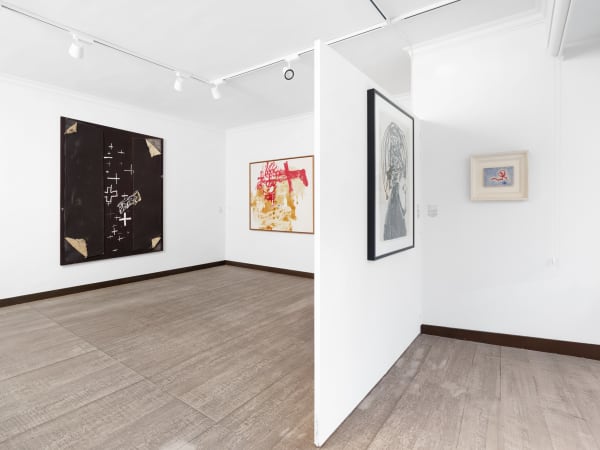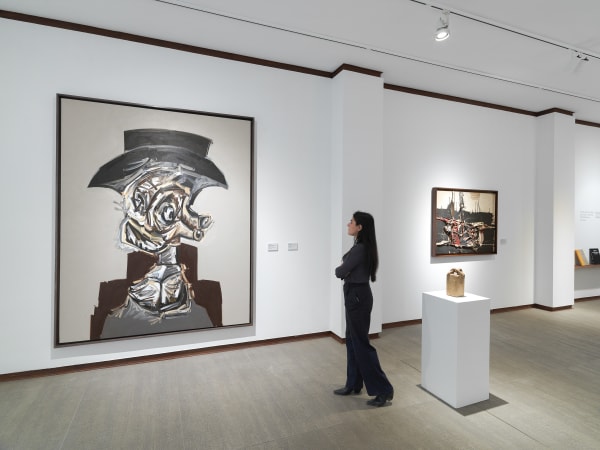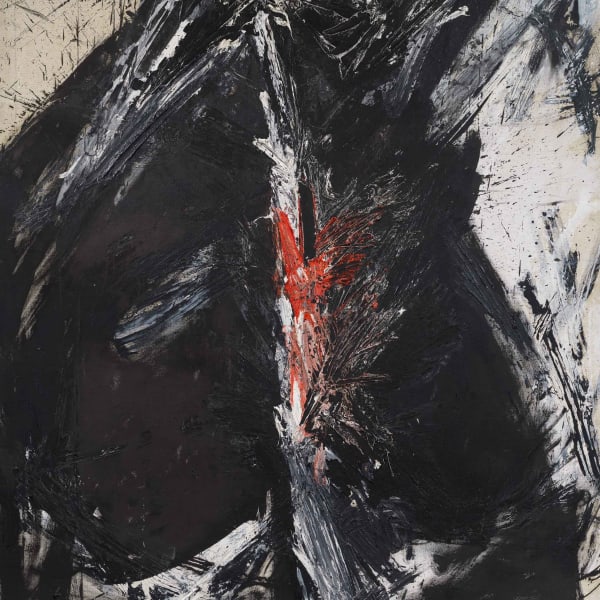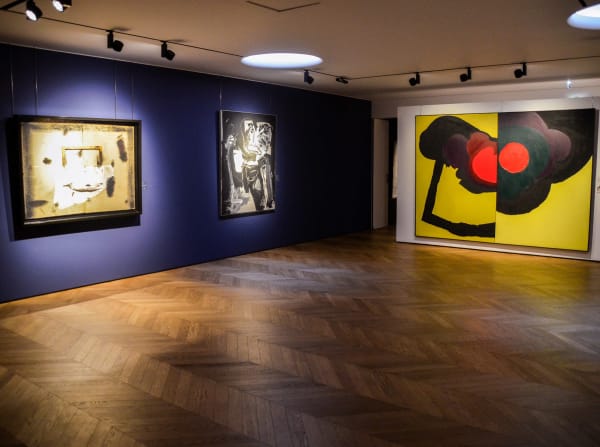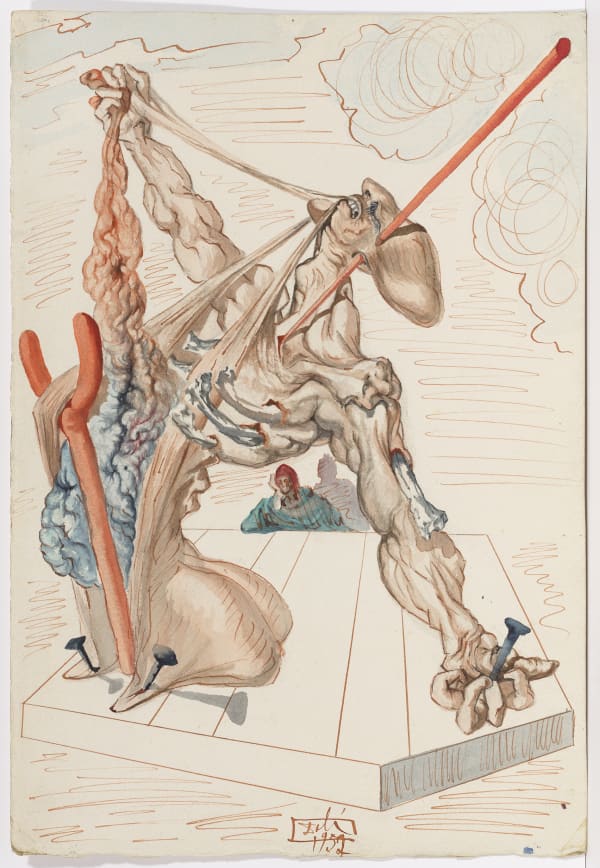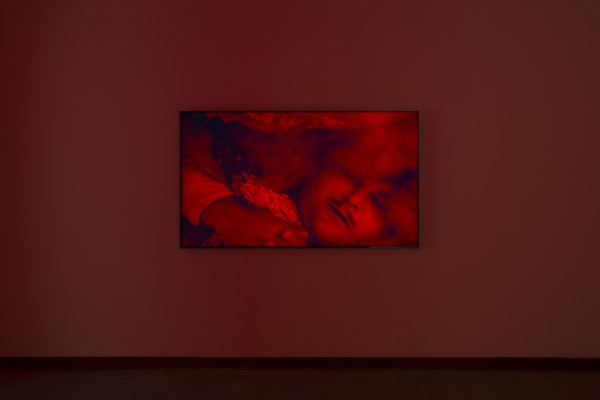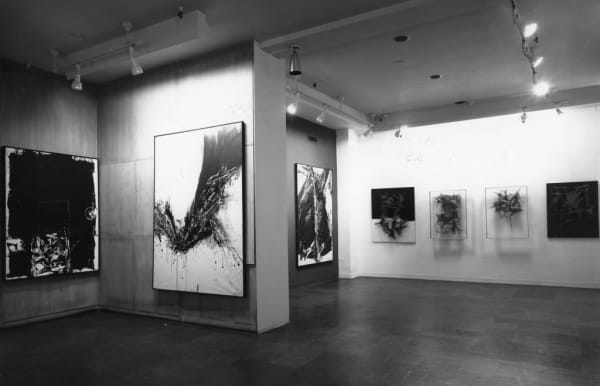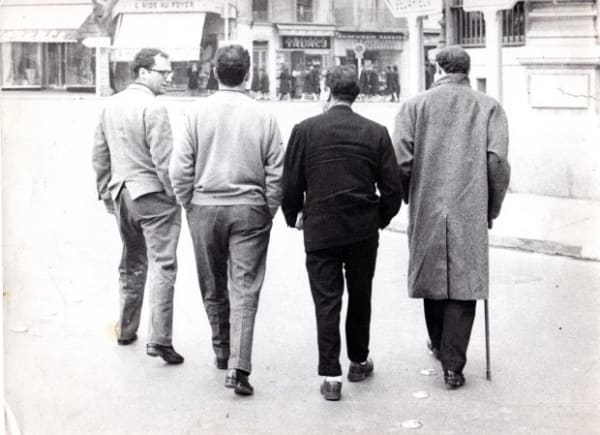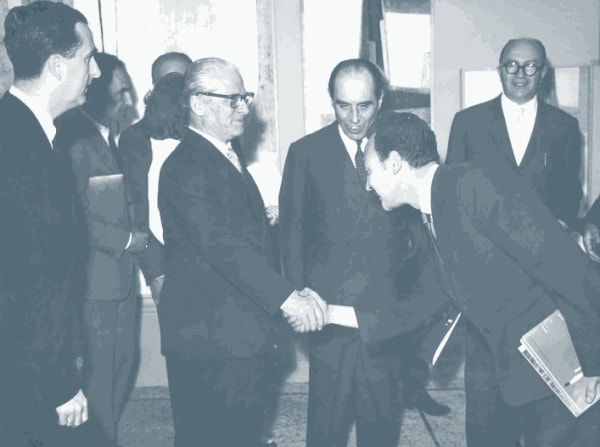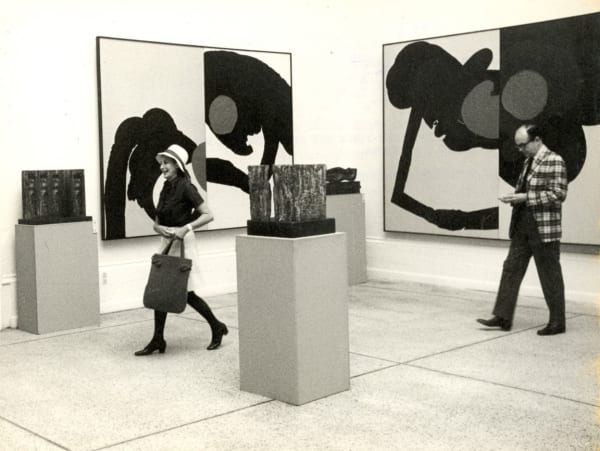Antonio Saura Huesca, 1930- Cuenca, 1998
"[...] the imperative need to cry out, to inundate surfaces and leave traces, to express oneself as if revealing the energetic possibilities of veing, to paint as a form of living, albeit through the amorous or destructive image of the female body, of a nothingless or of a whole, of a desperation or of a cosmic hunger, of a totality in expansion or of a concentric dynamic".- Antonio Saura
-

Résistance et renaissance : l'art espagnol d'après-guerre
Paris 20 Oct - 20 Dec 2025At a time when history seems suspended and collective memory kidnapped by official silence, post-war Spanish art is offered not as a witness, but as a practice of material resistance...Read more -

Au-delà de l'horizon
Paris 24 Apr - 24 Jun 2025In this exhibition, the act of looking—of casting one’s gaze beyond the present moment—becomes a quest for something that transcends us to show a personal vision of the universe. The...Read more -

RADICALLY UNIQUE, RADICALLY DIFFERENT
Barcelona 21 Nov 2024 - 15 Feb 2025If we champion difference rather than homogeneity, the 20th century appears to be a sequence of irreconcilable personalities. So unique that nothing links them. We could say that the systematic...Read more -

EXPLOSION
BARCELONA 11 Jan - 26 Mar 2024Mayoral brings together works by Joan Miró, Antonio Saura, Equipo Crónica, Eulàlia Grau, Antoni Tàpies, Manolo Millares, and Juana Francés presented through the gaze of two explosive scenes from Michelangelo...Read more
-

Saura & Picasso. The weight of history
PARIS 9 Jan - 28 Feb 2024Under the curatorship of Kosme de Barañano, we are presenting an exhibition in Paris dedicated to the artist Antonio Saura (Huesca, 1930 - Cuenca, 1998), underlining the importance of Pablo...Read more -

Saura in his context
BARCELONA 13 Apr - 30 Jun 2023This exhibition, organized in conjunction with Enrique Juncosa, presents six very characteristic works by Antonio Saura (1930-1998), one of the most important Spanish artists of the 20th century, in dialogue...Read more -

An Hommage to Pierre Matisse
BARCELONA 27 Jan - 12 Apr 2022Mayoral presents an exhibition in celebration of Pierre Matisse, one of the most important modern art dealers in the world, who enabled certain Spanish post-war avant-garde artists to achieve recognition...Read more -

An Hommage to Pierre Matisse
PARIS 15 Sep - 11 Dec 2021Mayoral presents an exhibition in celebration of Pierre Matisse, one of the most important modern art dealers in the world, illustrating how he enabled certain Spanish post-war avant-garde artists to...Read more
-

Zóbel and the Great Post-War Generation
MADRID 12 - 21 Mar 2021Mayoral’s first exhibition in Madrid, ‘Zóbel and The Great Post-War Generation’, will be held from the 11th to 21st March at the Fundación PONS. The exhibition brings together more than...Read more -

Saura. Brigitte Bardot et Autres Dames
PARIS 22 Nov 2019 - 1 Feb 2020Mayoral is delighted to open a new gallery in Paris with an exhibition devoted to Antonio Saura, 'Brigitte Bardot et autres dames'. Curated by art informel expert Martine Heredia, the...Read more -

Venezia 1958
BARCELONA 26 Sep - 4 Dec 2019The Galeria Mayoral revisits an exhibition held in the Spanish Pavilion at the 1958 Venice Biennale. This is the first time an exhibition reunites, more than 60 years after the...Read more -

With Rebellion Awareness is Born
BARCELONA 26 Sep 2018 - 5 Jan 2019Mayoral is pleased to present the exhibition With Rebellion, Awareness Is Born , a look at Spanish art of the postwar period which includes a painstaking selection of works by...Read more
-

Saura. Tragedy & Creation
BARCELONA 26 Apr - 25 Jul 2018Mayoral is proud to present the exhibition 'Saura: Tragedy & Creation', which echoes the first retrospective we mounted in 2005. The show consists of fifteen works created by Antonio Saura,...Read more -

Postwar Art in Spain
LONDON 26 Feb - 8 Mar 2018We are pleased and proud to present this exhibition on the art of the Spanish postwar years, featuring exceptional works by Brossa, Feito, Millares, Saura and Tàpies, in London. It...Read more
-

ART BASEL
JUNE 13 - 16, 2024 2024Paperback, 50 pagesRead more
Publisher: Mayoral Investigació
Dimensions: 29.8 x 21 x 0.5 cm -

Venezia 1958
2019Hardcover, 198 pagesRead more
Publisher: Mayoral Investigació
Dimensions: 31,5 x 23,5 cm -

With rebellion awareness is born
2018Hardcover, 120 pagesRead more
Publisher: Mayoral Investigació
Dimensions: 23,5 x 17 cm -
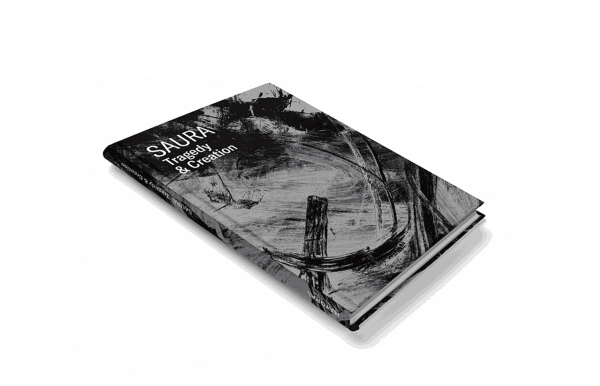
Saura
Tragedy & Creation 2018Hardcover, 103 pagesRead more
Publisher: Mayoral Investigació
Dimensions: 60x30 cm
-

Postwar art in Spain
2018Softcover, 21 pagesRead more
Publisher: Mayoral Investigació
Dimensions: 21 x 14.9 cm -
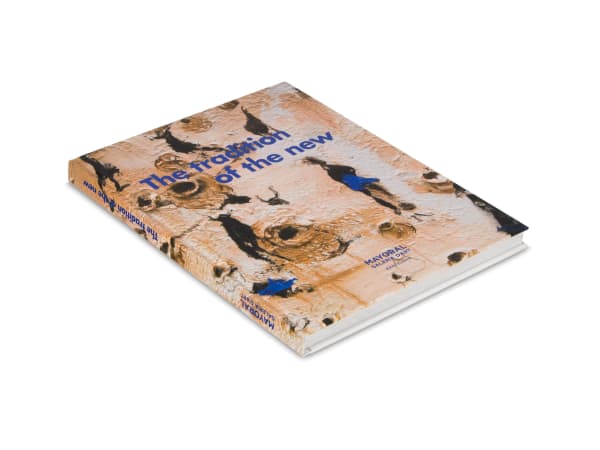
The tradition of the new
2011Hardcover, 152 pagesRead more
Publisher: Mayoral Investigació
Dimensions: 31.7 x 24.5 cm cm -

Saura
2006Softcover, 69 pagesRead more
Publisher: Mayoral Investigació
Dimensions: 31 x 21 cm
-

La Monnaie vivante
What can a body do? If everything is reduced to mere merchandise, how can we be a body that does not put exchange value before use value?. Text by Pedro G. Romero September 15, 2025La monnaie vivante is the title of an essay and a series of performative and photographic works promoted by Pierre Klossowski in 1970. Michel Foucault...Read more -

Radically unique, radically different
Carles Guerra presents a great show that mixes the 20th and 21st centuries, with the occasion of the 35th anniversary of the Galeria Mayoral November 18, 2024Catalan version Spanish version Galeria Mayoral is celebrating 35 years devoted to modern and contemporary art. The brilliant artists from the most iconic avant-garde share...Read more -

Un hommage à Pierre Matisse : une conversation entre Claudine Grammont et Elise Lammer modérée par Siân Folley
Claudine Grammont, Elise Lammer and Siân Folley talks about the exhibition "Un hommage à Pierre Matisse" at Galeria Mayoral, Paris November 19, 2021An Hommage to Pierre Matisse, Galeria Mayoral, Mayoral, Barcelona, Paris, Tàpies, Miró, millares, Canogar, Rivera, Saura, ExhibitiomRead more -

Pierre Matisse and the Spanish avant-garde | Elise Lammer
Elise Lammer, curator of "Pierre Matisse and the Spanish avant-garde" talks about the exhibition at Galleria Mayoral, Paris-Barcelona September 11, 2021It is not rare today to witness the same artist evolving across multiple galleries over the course of their career. Typically an artist would enter...Read more -

SAURA. Brigitte Bardot et autres dames|Martine Heredia
Martine Heredia, curator of "Brigitte Bardot et autres dames" talks about the exhibition at Galeria Mayoral, Paris November 26, 2019Antonio Saura, like Picasso, makes of the figure of the woman less a theme of predilection than a field of research. From 1954 on he...Read more -

A Conversation between Wilfredo Prieto and Rosa Lleó
On the occasion of the exhibition "Venezia 1958" at Galeria Mayoral, Barcelona October 31, 2019Mangos, Limes and Flags In 1958, Spain, like Portugal, was an insular, extremely poor country with a strong presence of the military and of Opus...Read more -

A Conversation between Pere Portabella and Vicenç Altaió
On the occasion of the exhibition "Venezia 1958" at Galeria Mayoral, Barcelona October 30, 2019We found ourselves in the dark night of the Franco dictatorship dominated by Castilianity and the cross: National Catholicism. A new generation, which hadn’t fought...Read more -

Bearing Witness to the 1958 Venice Biennale | Luis González Robles
Luis González Robles, curator of the Spanish Pavilion, speaks about the 29th Venice Biennale October 11, 2019Spanish Artists in the 29th Venice Biennale International Art Exhibition Spanish Pavilion, 1958 For this 29th Venice Biennale a series of works by artists representative...Read more -

On the 1958 Venice Biennale, Still | María Dolores Jiménez-Blanco
María Dolores Jiménez-Blanco talks about the 1958 Venice Biennale October 5, 2019The Spanish Pavilion at the 29th Venice Biennale, the edition held in 1958, has become an inevitable landmark in narratives to do with Spanish art...Read more -

With rebellion, awareness is born | Video
Video tour of the exhibition "With rebellion, awareness is born" at Galeria Mayoral, Barcelona November 21, 2018Mayoral is pleased to present the exhibition 'With rebellion', awareness is born, a look at Spanish art of the postwar period which includes a painstaking...Read more




